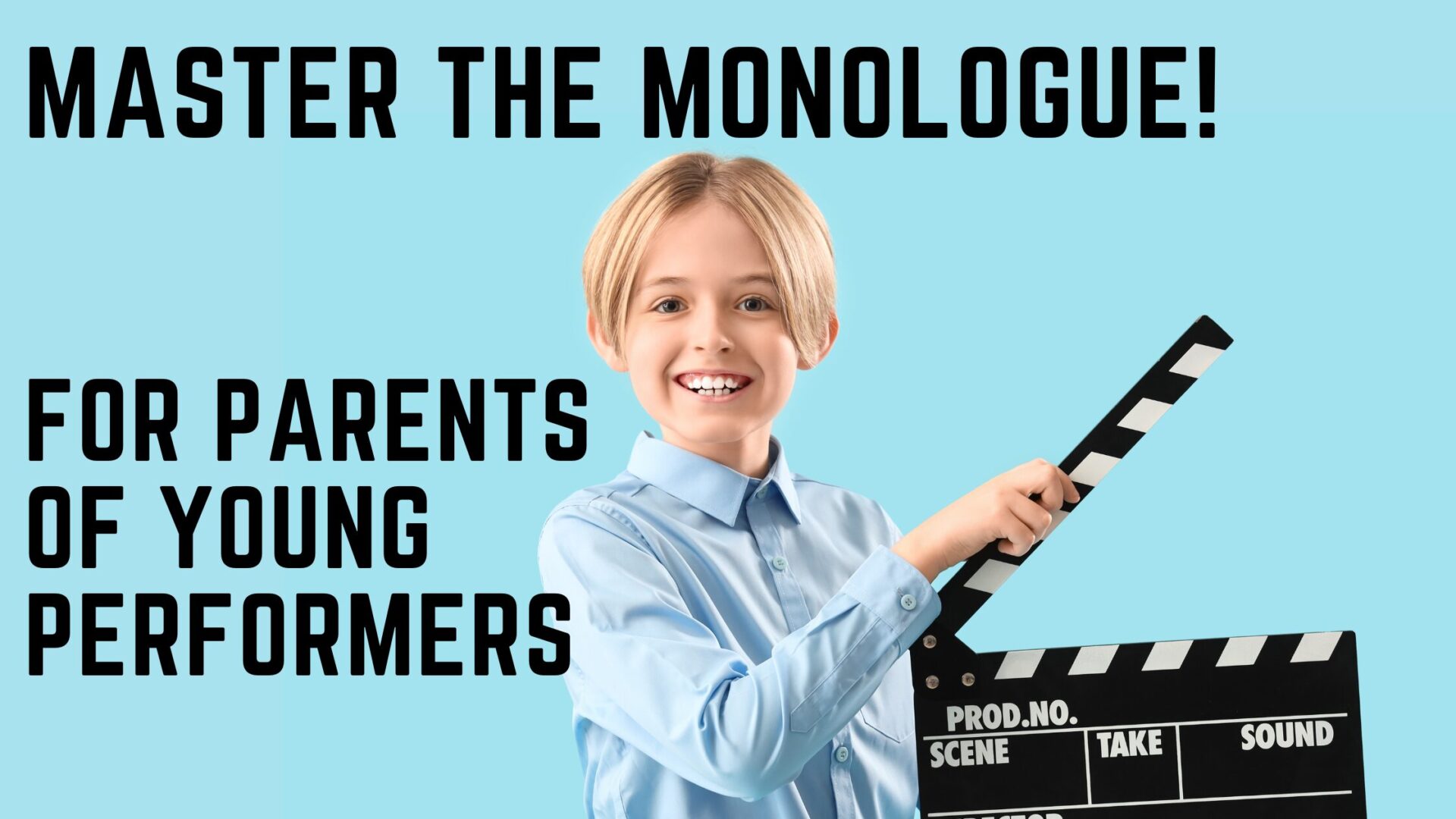
Make Your Child’s Monologue Stand Out
6 Expert Tips from a Professional Actress, Agent, Coach — and pushy parent!
Does the thought of helping your child prepare a monologue fill you with dread?
Maybe they’ve got an audition coming up — for a college, agency, or role — and you’re sat there thinking, “This just doesn’t sound real?”
Don’t worry — you’re not alone. And you’re definitely not helpless.
I’m Melanie Ash, founder of Meladrama Acting School, working actress, agent, mum to child actor Leo Ashton (House of the Dragon, The Bay, Deep Water) — and someone who’s been in this industry on every side of the casting table. For over 30 years, I’ve helped young actors (and their parents!) get results — from their first lines on stage to major professional credits on screen.
So whether you’re supporting a complete beginner or a Spotlight-signed pro, here are 5 tried-and-tested tips to help your young actor nail their monologue and stand out for all the right reasons.
1. Old School Beats Tech: Print the Script
Please, please don’t let them work off a phone or tablet.
Print the monologue. In fact, print a few copies — trust me, the first one will vanish into the abyss of the school bag. Don’t just print the original – scan the piece (phones can do this now!) and paste it into a Word doc with plenty of space between lines so they can annotate, scribble, highlight, and prep.
This isn’t just about memorising lines. This is about getting inside the text — and that starts with pen on paper.
2. Become a Script Detective: Find the Given Circumstances
Before they even start saying the lines, they need to understand them.
We use a simple tool: the 5 W’s.
- Who are they? Who are they speaking to?
- Where are they? Be specific – the world, the room, the mood.
- What has just happened? What are they doing in the scene?
- Why are they saying all this? What are they responding to?
- When is it? Time of day, season, era?
These are the given circumstances – the building blocks of character work. And if the script doesn’t give you the answers, you (and your child) get to invent them. That’s what actors do!
3. Get Clear on Their Objective
What does the character want?
This is what drives the monologue. And it needs to be clear, specific, and powerful. Not “He’s kinda sad and wants to be heard,” but:
👉 “He wants to dance.”
👉 “She wants her mum to come back.”
👉 “They want to be taken seriously.”
This gives the piece purpose — and gives your child something to fight for. Don’t forget – it’s not always the obvious! And sometimes it’s far simpler – try a few ways with different objectives! Sometimes something as simple as “she wants to go out with her mates” can add a really authentic feel and added dimension to a piece.
4. Break It Down: Thoughts, Emotions & Actioning
Now we start lifting the words off the page.
Before they even try to learn it, break the monologue into thought shifts — use slashes ( / ) to mark the beats. Then, alongside each section, add an emotion or a verb (this is called actioning) to help them understand the subtext.
Here’s an example from Billy Elliot:
Line:
“Don’t know. Sorta feels good, sorta stiff and that.”
Breakdown:
Don’t know. / Sorta feels good. / Sorta stiff and that.
Avoiding quietly / Thinking happily / Remembering painfully
This helps your child explore the emotional journey of the character — not just what they say, but what they feel. That’s where the magic is. That’s where actors shine.
Even younger children can benefit from doing this with a grown-up — it becomes a great way to talk about feelings, motivation, and even life.
👉 Want to dive deeper into subtext? Read this:
Why Subtext is Important & How to Find It – Backstage
5. Finally… Learn It (Properly!)
NOW they can start learning it.
By this point, they know what’s happening, why, and how their character feels. This means they won’t just remember the lines — they’ll understand them.
Top tips:
- Use the marked-up script (and keep a copy in your bag just in case…)
- Encourage them to learn the thought before the line – facial expressions and reactions should come just before they speak
- Stay consistent – 10 minutes a day for a week is far better than cramming for an hour the night before
And remember – it won’t go in straight away. But with patience, repetition, and purpose, it will. And when it does, they won’t just know it — they’ll own it.
6. Start and End with a Reaction
This one’s a game-changer — and it’s something even professional actors sometimes forget.
A monologue is never delivered in a vacuum. It’s always a response to something that’s just happened — someone’s said or done something that’s triggered the character into speaking. So…
🎭 Before the first line, there should always be a moment of reaction. A pause. A beat. A facial shift. Let us see what the character is thinking or feeling before they speak.
And…
🎭 At the end, don’t let them drop the energy. The final line should also be followed by a reaction. What’s shifted in them? What have they revealed? How do they feel now?
These moments — the silences, the shifts, the beats — are where the audience really leans in. They’re what make a monologue feel alive, authentic, and full of depth.
Final Thoughts from Mel
Helping your child prepare a monologue doesn’t need to be stressful.
With a little structure and support, you can help them transform a bunch of lines into something powerful, moving, and real.
Whether you’re a seasoned stage parent or just starting out, these techniques are the same ones I’ve used with students who’ve gone on to land roles in:
📺 House of the Dragon, The Bay, Emmerdale, Coronation Street, Ackley Bridge, Hollyoaks, Casualty, Red Rose, School for Good and Evil, Peterloo, and more.
Need a hand? Meladrama offers one-to-one coaching, self-tape prep, and tailored support for parents navigating the industry.
Drop me a message — I’d love to help.
Melanie Ash (BA HONS/ALAM)
Founder & Director, Meladrama Acting School
Mum to Leo Ashton | Agent at CHAOS | Actor | Coach | Human Sat Nav for Showbiz Parents
